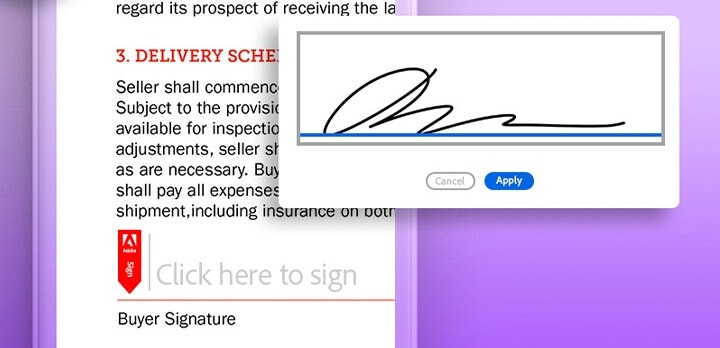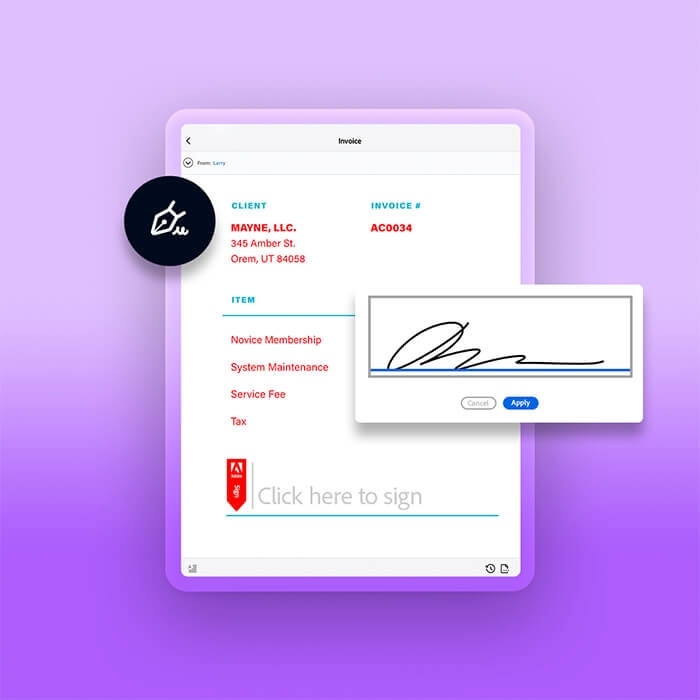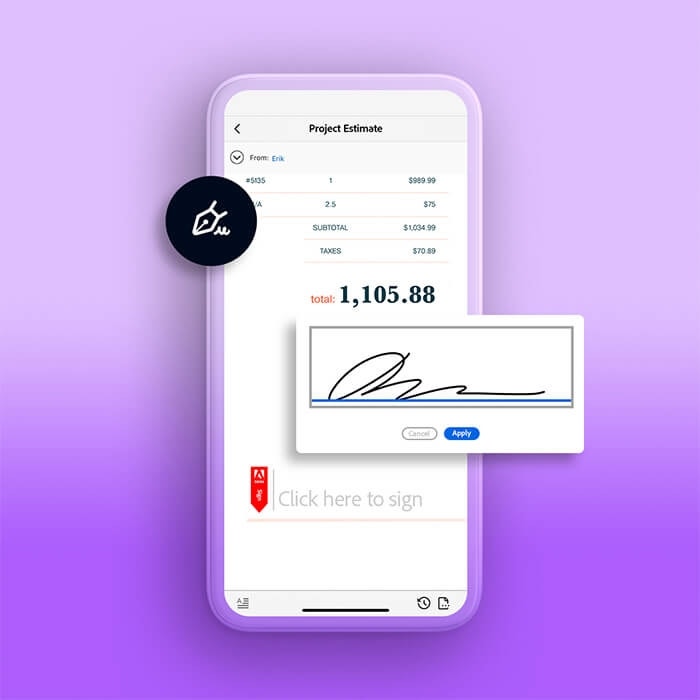Adobe Acrobat Sign
Make sure your e-signatures comply with the UETA.
Delve into the applicable laws that govern electronic forms and e-signatures, and ensure that your digital paperwork complies with these legal requirements.

E-signatures are legal signatures.
Many businesses and organizations use electronic records or digital signatures. Adobe Acrobat Sign makes electronic signatures easy for legally binding contracts and paperwork. Learn more about what makes these signatures not only efficient but official.
What are UETA and the ESIGN Act?
In 1999, a nonprofit called the National Conference of Commissioners on Uniform State Laws (NCCUSL) proposed the Uniform Electronic Transactions Act (UETA), which recognized the validity of electronic signatures. Forty-eight states, as well as Puerto Rico, the U.S. Virgin Islands, and the District of Columbia, passed laws based on this proposed framework. The states that have not adopted the UETA Act, New York and Illinois, have other similar laws regarding the legal recognition of electronic records, use of electronic records, and validity of electronic signatures.
In 2000, Congress passed the U.S. Electronic Signatures in Global and National Commerce (ESIGN) Act, which legislated that electronic signatures are valid in every state of the United States or territory where U.S. federal law applies, as well as for federal government business.
In the U.S. and most other countries, electronic signatures have the same legal effect of denoting parties’ agreement as paper records do. Prior to electronic documents, a signed paper document was the known single authoritative copy of the transferable record. With the UETA and ESIGN Acts, those authoritative copies can be digital.

What makes an e-signature legal?
Under this legislation, there are five things that make electronic signatures valid in the U.S.:
1. Intent to sign
A signer must show clear intention to sign. This can be done by using a mouse or stylus to draw a signature, by typing a signature, or by clicking a clearly labeled “Accept” button. All of these show intent and informed consent.
2. Consent to do business electronically
Electronic signature laws usually require some form of consent to do business electronically. A standard consent clause can read: The parties agree that this agreement may be electronically signed. The parties agree that the electronic signatures appearing on this agreement are the same as handwritten signatures for the purposes of validity and admissibility.
3. Clear signature attribution
Signatures need to be clearly affiliated with their signees.
4. Association of signature with the record
Given signatures need to be clearly affiliated with specific documents or sections of those documents.
5. Record retention
The ESIGN Act legitimized the validity of electronic records, provided that they accurately reflect the agreement and can be reproduced as needed.


Why you should use electronic commerce and electronic contracts.
Electronic signatures are not simply legal in the U.S. They are also faster, more secure, cheaper to retain, and easier to reproduce.
Requiring your customers and partners to print, sign, or fax paper documents decreases satisfaction and increases costs. On average, companies that use digital solutions and electronic systems are 26% more profitable than companies that don’t, and they have 12% higher market evaluations, according to a study by Capgemini. Using electronic means for agreements, notarization, or documents removes bottlenecks and allows you to complete transactions more quickly and smoothly.
See how these companies stay compliant with Acrobat Sign.
Sony Bank
Acrobat Sign can help with efficiency and compliance internationally. Japan’s Sony Bank sped up their workflow and cut costs with Acrobat Sign while balancing usability and security. Sony Bank cut the time that contract work and other transactions could take from up to three weeks down to a single hour. The bank also reduced the need for registered seals — common in Japan — and the stamp taxes that came with them.
The City of Sacramento
California’s capital city connected citizens to valuable public services while following rules particular to the public sector, balancing IT needs, and conducting governmental affairs. By taking inspiration from the business community, Sacramento was able to connect with its citizens about city services, with a campaign that resulted in a 30% increase in the city’s campaign subscription rate, growing the municipality’s voice while cutting down on red tape.

Improve security procedures and enforceability of your electronic documents with Acrobat Sign.
Acrobat Sign complies with electronic signature laws and syncs seamlessly with industry-standard business software. Adobe Acrobat Pro allows you to create PDFs, collect electronic signatures and collaborate in a single application. Save time and costs by taking paper documents out of your information processing system.
